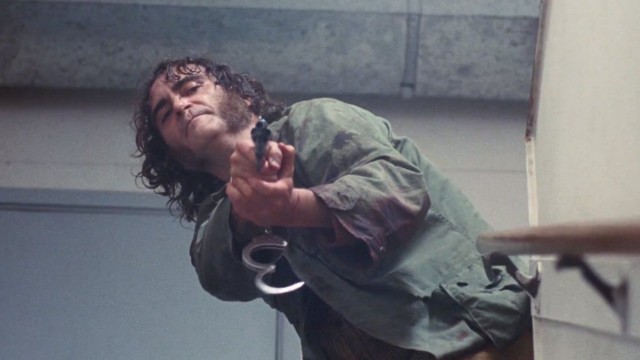Less than two years after Altamont marked the end of the Hippy era, Rolling Stone published 2 in depth stories by Hunter S. Thompson forming Fear and Loathing in Las Vegas. By 1971, the good vibes had died, and the hangover of reality was setting in. People were looking back with nostalgia at what used to be a more free loving time, and were looking ahead to what seemed to be a dark path of oncoming commercialism, greed, excess, militant law enforcement, and class warfare. Fear and Loathing begins with a road trip from Los Angeles to Las Vegas by two drug-crazed hippies hellbent on wreaking havoc all over the circus of the rich.
In 1998, the same year that Terry Gilliam adapted Fear and Loathing in Las Vegas for the big screen, The Coen Brothers made a movie about stoners in the 1990s. The Big Lebowski is an icon of slacker cinema, where a lost rug becomes a kidnapping caper that careens around Los Angeles involving unsympathetic police, dominating rich people, porn magnates, and tripped out artists with too much time on their hands. At the center of this gigantic mess is Jeffrey Lebowski, a stoner who is so friendly his landlord doesn’t mind when he’s late for the rent. Set during 1990-1991, when George H.W. Bush was in office, The Coens leave a lot of political aspects lying around about rich people constantly villainizing the poor people in order to create their own wealth. Vaguely reminiscent of 1974’s Chinatown, The Big Lebowski created its own milieu of stoner comedy filled with vague violence and paranoia.
Following in the footsteps of all these references, Paul Thomas Anderson adapted Thomas Pynchon’s novel Inherent Vice, a vague novel about the transitional period after Altamont. Set in Los Angeles in 1970, Inherent Vice follows private detective Doc Sportello (Joaquin Phoenix) as he navigates a postmodernist detective story of kidnapping, fortune, and corruption. Doc’s ex-girlfriend, Shasta Fay (Katherine Waterston) wanders in with a story of how she’s dating Mickey Wolfmann (Eric Roberts), a married real estate mogul tied to a neo-nazi group, but was invited into a scheme by Wolfmann’s wife and her lover to get Wolfmann committed to an insane asylum in order to steal his fortune. This leads to a story of drug cartels, rehab psych wards, casinos, unsympathetic police, police corruption, lawyers, runaways, snitches, and “massage” parlors.
For the first time in Anderson’s history, it feels like he’s following the crowd. Inherent Vice feels like a longer but lesser The Big Lebowski with even more Chinatown implications. Sardonically narrated by Sartilege, a side character who occasionally pops up in the movie, Anderson is trying to create an assaultive experience to beat you over the head with the oncoming bad vibes of the moneyed interests. Anderson doesn’t believe the hippies were at fault for anything that happened, but were snared by the wealthy attempting to snag more control over America. The same type of lesson that was obliquely taught with Fear and Loathing in Las Vegas, documenting the oncoming fall of idealism into the capitalistic mindset. The only new thing added is the inclusion of gentrification as an outcome, with a low-income black neighborhood being bulldozed for a cheesy new suburb.
If you’ve worn out your editions of The Big Lebowski, and need something new to dig your teeth into, then you could do worse than Inherent Vice. The main difference between the two is that Inherent Vice is more violent, more sexual, and more full of male ego than Lebowski, which can ruin the good vibes of the experience. A sad wistfulness permeates Inherent Vice, as if America lost something that year in the middle of all this hullabaloo…also the theme of Fear and Loathing. While Inherent Vice is visually pleasing, hilarious, and genuinely interesting, the retreading of topics makes it seems more like a Xerox than a genuine article. If you haven’t OD’d on Chinatown, Fear and Loathing or Lebowski (as they are relatively obscure films), you may fall in love with Vice.


